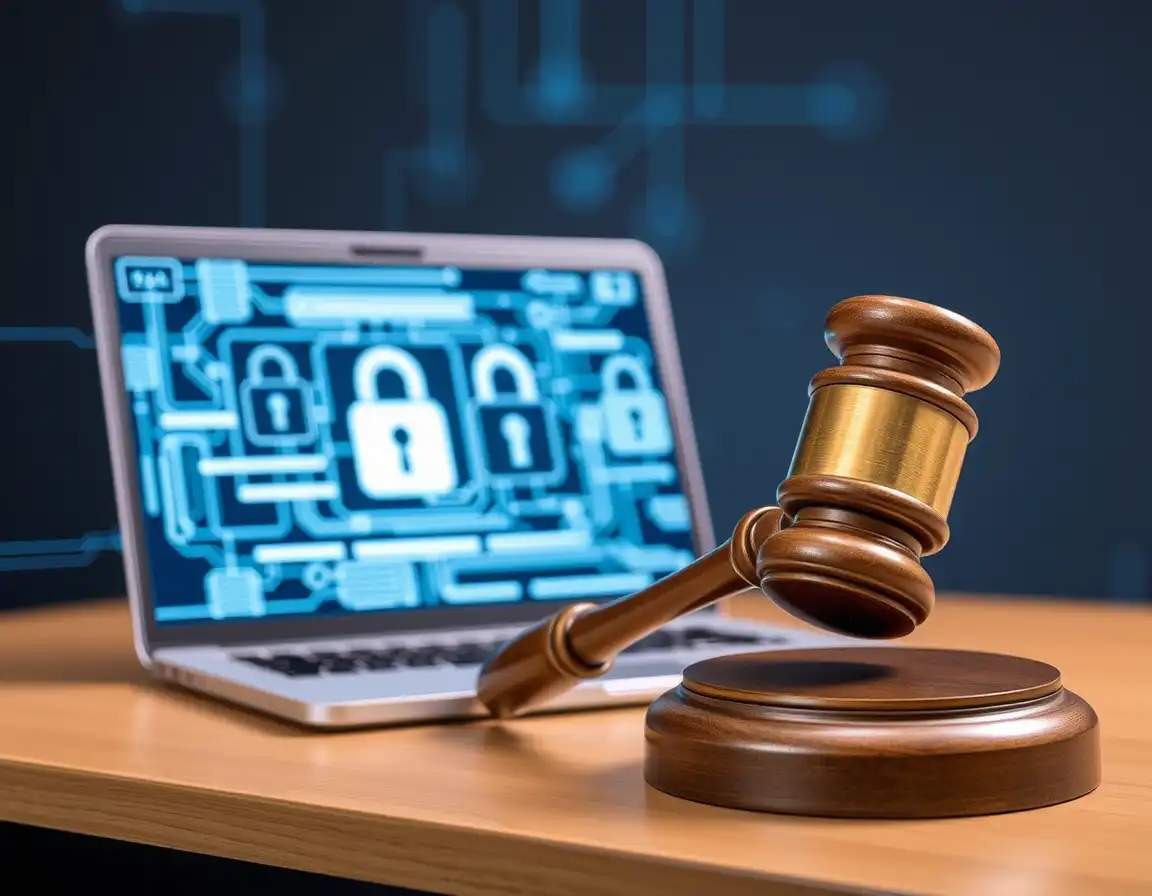Data breaches have turned out to be much too widespread in recent years. A breach means the unauthorized entry of confidential or sensitive data and frequently brings harm to individuals or companies, and even governments. Causes Before excluding data breaches, it is necessary to know why they may frequently occur. The most standard causes of data leaks are listed below in the form of easy-to-understand explanations.
Weak or Stolen Passwords
Passwords serve as a barrier between a person’s or company’s data, but it is still common for many people to opt for the easier guess, “123456,” “admin,”-and they’re set.
Specific reason for breaches:
Such passwords are very weak compared to the tools used by hackers, and such passwords will only take a matter of seconds to be guessed. Not only will passwords allow unauthorized access to accounts and systems when leaked or stolen.
Preventive measures:
Ensure you have powerful and complicated passwords by combining symbols, letters, and numbers. It is not recommended to use the same password on various accounts, and activate two-factor authentication when possible.
Phishing and Social Engineering Attacks
Fish people have the mission of cheating humans by revealing non-public records, including usernames, passwords, or credit card numbers, to cyber criminals.
Here’s how it works:
Hackers send e-mails, messages, or hyperlinks that come from a dependable source, which includes banks or employers. When the sufferers click on the hyperlink or enter their statistics, that record is going directly to the attacker.
Example:
You have an e -email announcing that your financial institution account is closed. It asks you to enter your details to unlock it. But the e-publishing is fake and sends your records to a hacker, and you quit.
Prevention:
Always look cautiously at the email address of the sender, do not click on hyperlinks you no longer know, and in no way provide private information via email.
Unpatched Software and Outdated Systems
Undergoing normal updates, which might be generically known as “patching,” is an oft-unnoticed motive of data breaches. These half-baked software, apps, or operating systems harbor bugs or vulnerabilities that could empower hackers. Regularly, builders release updates referred to as patches to repair these safety holes. But while such updates are not installed, the device simply stands open for assaults.
Why Unpatched Software Is a Security Risk
When updates are no longer available, that means the system is embedded with vulnerabilities known to hackers. Criminals write their tools quite literally to poke around for those glitches and use them to make unauthorized entrance to engage in data theft, installing malware, or taking control of your system.
Example:
Your browser or antivirus will not be able to block malicious sites or detect new viruses, leaving your machines wide open to attacks.
Reality-Based Deductions
In the previous couple of years, instances of massive data breaches have emerged due to the fact that an agency did not get hold of important updates. One such example is the Equifax data breach of 2017, wherein non-public information of more than one hundred forty million people changed into compromised due to an unpatched software vulnerability. The enterprise was aware of the trouble but did not address the difficulty in time.
Reasons for Updating Aversion
Most users or business entities avoid the software update installation because:
It takes too long. They believe
There is a risk of introducing system problems. They consider
They are not informed. Just simply unaware of dangers.
However, it is much more dangerous not to install updates than to install them. It would take just a few minutes’ downtime to achieve this, as compared to what a cyber-attack would inflict.
How to Prevent This Type of Breach
To protect yourself or your organization from attacks based on outdated systems, implement the following best practices:
Automatic updates should be enabled: Most operating systems and apps feature this. Activate it to ensure that you don’t miss a security patch.
Update all devices regularly:
This includes computers, mobiles, servers, routers, and even smart devices.
Track software versions:
For businesses, an inventory of all software used is helpful to cross-check that all is up-to-date.
Remove unused software:
Old, unused programs are easy to forget about and thus easy for hackers to target. Uninstall what you do not need.
Malware and Ransomware Attacks
Some of the maximum dangerous weapons within the arsenal of cybercriminals are malware and ransomware. These nasty packages inflict untold harm upon the person, organizations, and even authority structures. Understanding how they work and how to protect oneself in opposition to them is paramount to an accidental breach of information.
Malware, short for malicious software, is any harmful program that is designed to destroy, disrupt, or gain unauthorized access to an operating system or network. Malware can typically be classified into several types:
Viruses infect files, propagating when those files are shared.
Trojans pretend to be legitimate software but trick the user into installing them.
Spyware gathers information from your computer in secret.
Adware displays unsolicited advertisements and may further track your behavior.
What Ransomware Is:
Ransomware is a type of malware that encrypts your documents or locks them, requiring a ransom payment to unlock them. It is sort of like a person stepping into your home, piling up your valuables, and traumatic a fee for bringing them back.
How it surely works:
Ransomware often reaches a computer through an attachment in an email, malicious downloads, or a few different insecure internet website. It locks the entirety up so that you aren’t able to get right of entry to your documents.
Real-life
The WannaCry ransomware assault in 2017 affected more than 200,000 pc systems in some point of more than one hundred fifty countries. Causes of billions of damage. Most of the infected structures have been running previous software programs, making them easy targets.
How Malware and Ransomware Breach Data
These types of attacks can comprise major demographic breaches by:
- Stealing private information like customer records, financial data, and personal files.
- Making systems non-operational and stopping business operations.
- Rapidly spreading within a network to infect several devices.
- Rendering backups obsolete if they are also encrypted by the attacker.
- In most cases, having the ransom paid does not guarantee that.
Insider Threats (Employees or Contractors)
Not all breaches of information result from hacking actions and sports with the aid of outside forces. Sometimes, the inner people pose the maximum sizable threats. Such insider threats include people who might also have full right of entry to sensitive systems and information about employees, contractors, or partners.
An insider danger occurs when someone inside an organization, whether intentionally or via negligence, commits a security incident. In such cases, insiders have already got admission to structures and statistics, making it simpler for them, deliberately or accidentally, to cause damage.
Insider threats are more often than not classified:
Malicious insiders:
Malicious insiders are people who misuse their get admission to deliberately break statistics, leak sensitive information, or harm the enterprise. For example, a disgruntled employee steals client records simply earlier than leaving.
Accidental insiders:
Accidental insiders are individuals who imply well but make errors, which include clicking a phishing link, misconfiguring a database, or sending categorized statistics to the wrong person. Among the issues that surround the insider threats is that they are usually not detected easily within a long time. These people will pass unimpeded since they already have a valid reason to be there. As such, their activities might not be suspicious at first. This increases its difficulty of detection compared to the normal external attacks. The threats posed by insiders are especially threatening as most of the conventional security measures cannot address them, since they are based on familiarity and trust.
How to Stop Insider Threats
The goal of stopping insider threats shouldn’t undermine the consideration given to employees; instead, smart structures have to be evolved that reduce threats whilst ensuring personnel can work freely.
Critical steps to forestall an insider breach include:
Limit admission to:
Adhere to the principle of “least privilege,” wherein personnel should be granted access to the records they need to perform their duties.
Implement role-primarily based permissions:
Ensure special tiers of entry are assigned based on one’s task description or branch.
Revoke right of entry at once upon exiting:
This consists of get right of entry to login credentials, mail debts, and internal tools.
Monitor consumer hobbies:
Use a software program to sing unusual behaviors, along with downloading large files and odd log-in hours.
Conduct regular protection attention education:
Educate employees on how to perceive suspicious behavior, shield sensitive facts, and avoid inadvertent errors.
Establish a tradition of safety:
Encourage the employee to report any suspicious behavior and mistakes without worrying about punishment.
Third-Party Vendor Risks
Almost all businesses these days have a few or the alternative 0.33-birthday celebration companies or third-party service carriers to help them with their daily operations. Such companies may perform numerous offerings, which include cloud storage, IT help, and payment processing, or it could be software tools. Although outsourcing enables the improvement of the performance of the provider of shipping, it incorporates its own price risk in terms of protection.
What Makes Third Parties a Threat
They commonly require the right of entry to sensitive data to carry out their jobs. For instance, a payroll service may additionally require employees’ data, or a software employer may want access to client databases. In either case, if those vendors no longer possess adequate cybersecurity practices, hackers can target them as a return door into your systems.
Real-lifestyle Example:
The Target statistics breach (2013): This breach befell whilst hackers accessed the store’s community through a 3rd-party HVAC supplier. It ended in stealing more than forty million credit scores and debit card information.
How to Mitigate Risks Posed by Third-Party Vendors
Third-party risk management isn’t going to assert that one should avoid all types of vendors – it means being careful about choosing the vendor and properly putting all safeguards in place to manage this. Details as follows:
Robust Vetting of Vendors:
Before considering vendors for transactions about any of their services, make sure that you check the security policy, certifications, and history of the vendor. Ask such questions as: Is there an encryption of data? Was there a previous breach?
Create Unambiguous Contracts:
These security requirements, which relate to data protection rules regarding breaches, notification timelines, and access, are included in the contract.
Limit Data Access:
Provide vendors with the bare minimum access that they require and no more than that. Withhold full access unless.
Audit of Vendor Activity:
Use tools that log and track vendor access to your systems. Watch out for weird patterns or unauthorized changes.
Conduct Periodic Audits:
Examine the security performance of vendors regularly. Request the latest report or be involved in third parties’ security assessments.
Create an Exit Plan:
If it happens that the service of the vendor is terminated, then the vendor must immediately deny access to the service, followed by data return or secured deletion related to the vendor.
Conclusion:
Knowing the usual causes of fracture can beautify the safety of our data. Most violations occur due to errors or a lack of consciousness. If we use strong passwords, continue to be careful with e -email, update the software, and train employees well, we are able to reduce the possibility of Databreech. Visit our website for more about law related topics.





